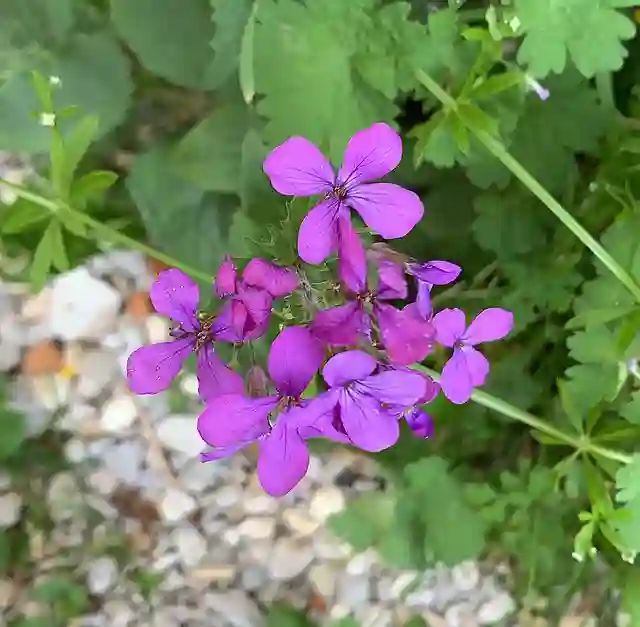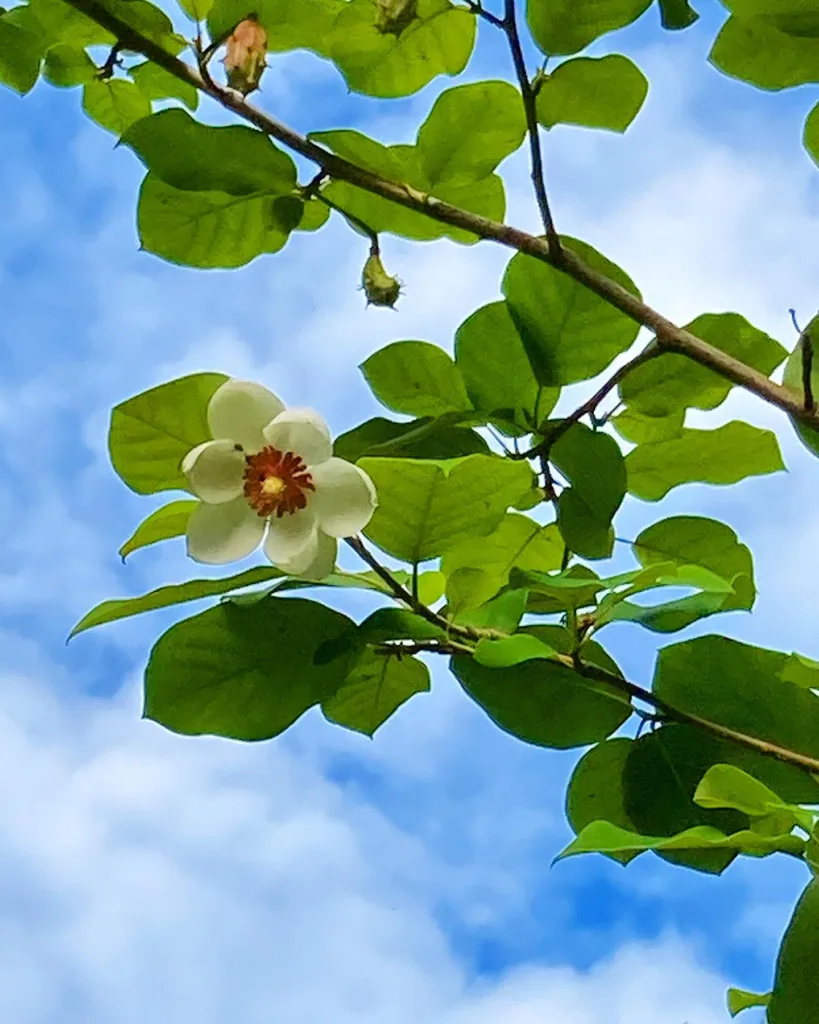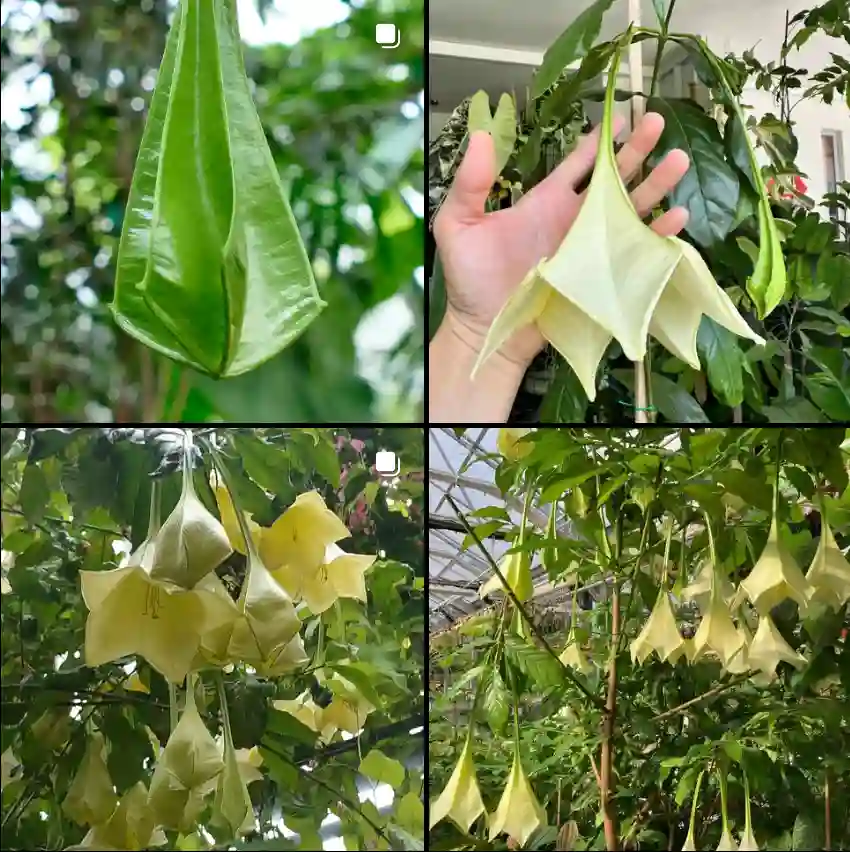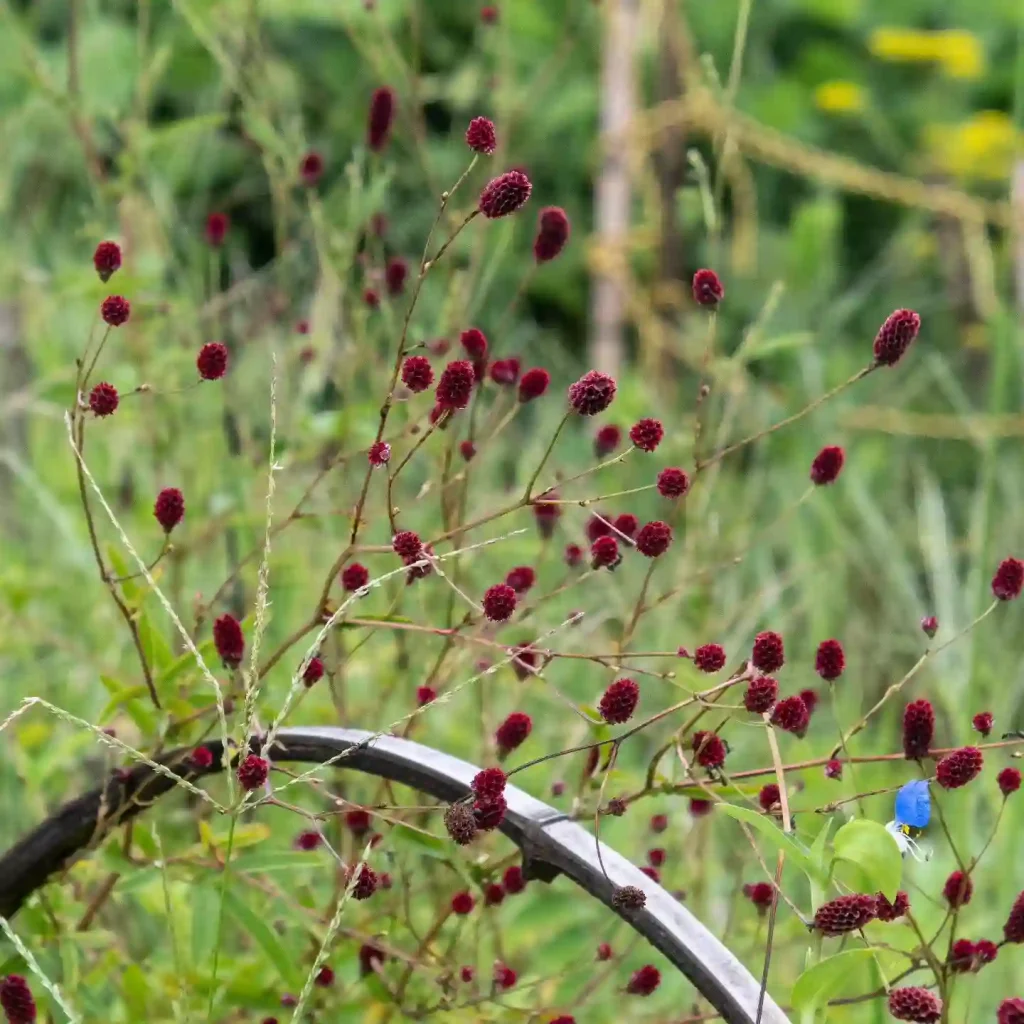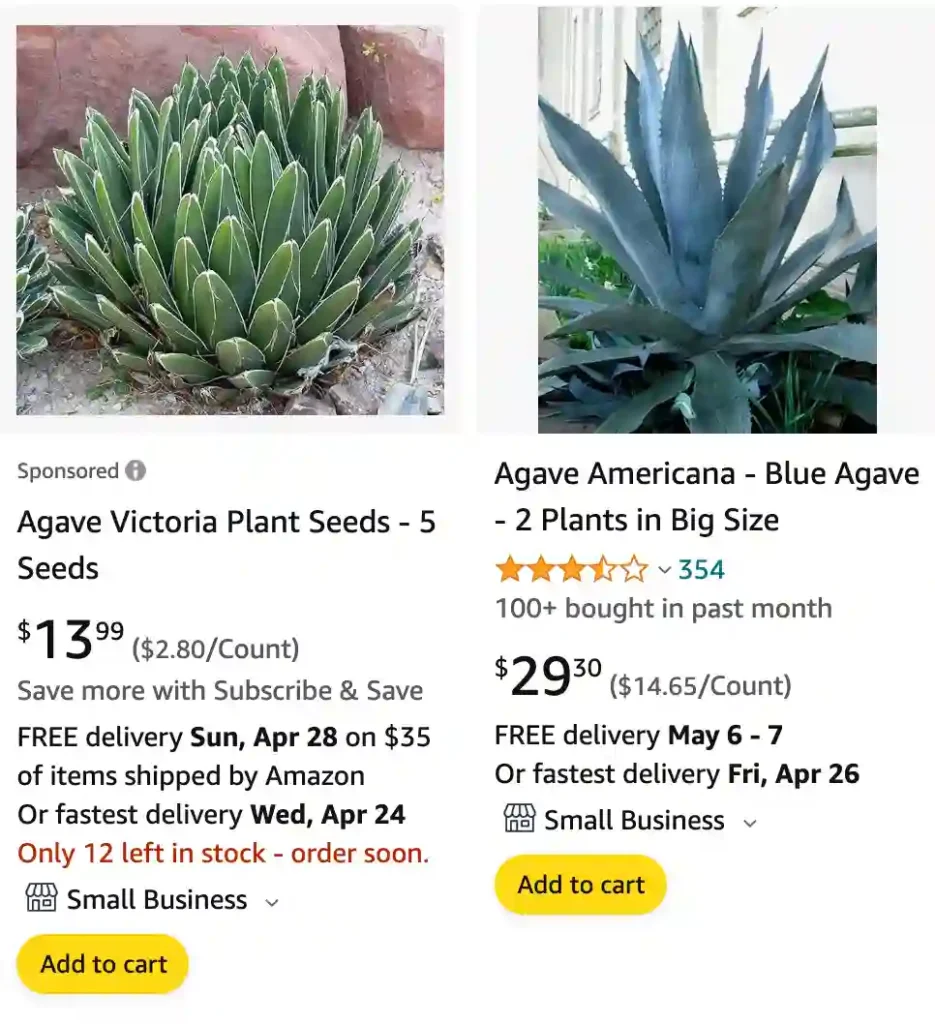
August 23 – Agave
"Agave, the century plant, defines August 23."
Agave symbolizes patience and strength. You achieve greatness through perseverance, blossoming when the time is right. Like this plant, you are a symbol of endurance and beauty.
The Agave: My Desert Darling
I’ve always been drawn to the desert. The stark beauty, the resilience of life clinging to existence in such harsh conditions, it speaks to something deep within me. And among the many wonders of the arid landscape, the agave holds a special place in my heart.
The agave belong to the Asparagaceae family, with its striking rosette of thick, fleshy leaves, is a symbol of endurance and adaptation. Its sharp spines and tough skin serve as a warning to any creature foolish enough to challenge its defenses. But beneath this formidable exterior lies a surprising tenderness. The agave’s heart, or piña, is a source of sweetness and nourishment, and its sap can be fermented to create the intoxicating drink known as mezcal.
For centuries, the agave has been an integral part of human cultures in the Americas. Its fibers were used to make rope and clothing, its leaves were used for thatching roofs, and its sap was used to make soap and medicine. And of course, the agave is perhaps best known for its role in the production of tequila, a spirit that has become synonymous with Mexican culture.
But the agave is more than just a utilitarian plant. It is also a source of beauty and wonder. Its towering flower stalks, which can reach heights of over 30 feet, are a sight to behold. And the agave’s diverse forms and colors, from the deep green of the Agave americana to the silvery blue of the Agave parryi, add a touch of artistry to the desert landscape.
Agave: A Diverse Genus
The agave genus is a large and diverse one, with over 300 recognized species. These species vary widely in size, shape, and color, and they are found in a variety of habitats, from the deserts of Mexico to the mountains of the Andes. Here are species of agave:
- Agave abisaii A.Vázquez & Nieves
- Agave acicularis Trel.
- Agave acklinicola Trel.
- Agave acuispina Trel.
- Agave × ajoensis W.C.Hodgs.
- Agave aktites Gentry
- Agave albescens Trel.
- Agave alboaustralis (E.Solano & Ríos-Gómez) Thiede
- Agave albomarginata Gentry
- Agave albopilosa I.Cabral, Villarreal & A.E.Estrada
- Agave americana L. Plant FAQs: Agave Americana – Century Plant
- Agave amica (Medik.) Thiede & Govaerts
- Agave andreae Sahagún & A.Vázquez
- Agave angustiarum Trel.
- Agave angustifolia Haw. Plant FAQs: Agave Angustifolia
- Agave anomala Trel.
- Agave antillarum Descourt.
- Agave apedicellata Thiede & Eggli
- Agave applanata K.Koch
- Agave arcedianoensis Cházaro, O.M.Valencia & A.Vázquez
- Agave arceliensis (Art.Castro, J.G.Zavala & Cruz Durán) Idrees & Z.Yong Zhang
- Agave × arizonica Gentry & J.H.Weber
- Agave arubensis Hummelinck
- Agave asperrima Jacobi
- Agave atrovirens Karw. ex Salm-Dyck
- Agave attenuata Salm-Dyck Plant FAQs: Agave Attenuata – Foxtail Agave
- Agave aurea Brandegee
- Agave avellanidens Trel.
- Agave azurea R.H.Webb & G.D.Starr
- Agave bahamana Trel.
- Agave bicolor (E.Solano & García-Mend.) Thiede & Eggli
- Agave boldinghiana Trel.
- Agave bovicornuta Gentry
- Agave braceana Trel.
- Agave bracteosa S.Watson ex Engelm. Plant FAQs: Agave Bracteosa – Spider Agave
- Agave brevipetala Trel.
- Agave brevispina Trel.
- Agave brittoniana Trel.
- Agave brunnea S.Watson
- Agave bulbulifera (Castillejos & E.Solano) Thiede
- Agave bulliana (Baker) Thiede & Eggli
- Agave cacozela Trel.
- Agave cajalbanensis A.Álvarez
- Agave calciphila G.D.Starr
- Agave calodonta A.Berger
- Agave caribaeicola Trel.
- Agave caymanensis Proctor
- Agave cerulata Trel.
- Agave chamelensis (E.J.Lott & Verh.-Will.) Thiede & Eggli
- Agave chazaroi A.Vázquez & O.M.Valencia
- Agave chiapensis Jacobi
- Agave chrysantha Peebles
- Agave chrysoglossa I.M.Johnst.
- Agave cocui Trel.
- Agave coetocapnia (M.Roem.) Govaerts & Thiede
- Agave collina Greenm.
- Agave colorata Gentry
- Agave confertiflora Thiede & Eggli
- Agave congesta Gentry
- Agave convallis Trel.
- Agave cremnophila G.D.Starr, Etter & Kristen
- Agave cryptica G.D.Starr & T.J.Davis
- Agave cundinamarcensis A.Berger
- Agave cupreata Trel. & A.Berger
- Agave datylio F.A.C.Weber
- Agave dealbata É.Morren ex K.Koch
- Agave debilis A.Berger
- Agave decipiens Baker
- Agave delamateri W.C.Hodgs. & Slauson
- Agave demeesteriana Jacobi
- Agave deserti Engelm.
- Agave difformis A.Berger
- Agave dissimulans Trel.
- Agave doctorensis L.Hern. & Magallán
- Agave dolichantha Thiede & Eggli
- Agave durangensis Gentry
- Agave dussiana Trel.
- Agave eggersiana Trel.
- Agave ellemeetiana K.Koch
- Agave ensifera Jacobi
- Agave evadens Trel.
- Agave felgeri Gentry
- Agave filifera Salm-Dyck Plant FAQs: Agave Filifera – Thread Agave – Cotton Candy Agave
- Agave flexispina Trel.
- Agave fortiflora Gentry
- Agave fourcroydes Lem.
- Agave funkiana K.Koch & C.D.Bouché
- Agave fusca (Ravenna) Thiede & Eggli
- Agave galvaniae (A.Castañeda, S.Franco & García-Mend.) Etter & Kristen
- Agave garciae-mendozae Galván & L.Hern.
- Agave garciamartinezii Beutelsp. & Najarro
- Agave garciaruizii A.Vázquez, Hern.-Vera & Padilla-Lepe
- Agave geminiflora (Tagl.) Ker Gawl. Plant FAQs: Agave Geminiflora
- Agave gentryi B.Ullrich
- Agave ghiesbreghtii Verschaff.
- Agave gigantensis Gentry
- Agave gilbertii A.Berger
- Agave × glomeruliflora (Engelm.) A.Berger
- Agave gomezpompae Cházaro & Jimeno-Sevilla
- Agave gracielae Galvan & Zamudio
- Agave gracilipes Trel.
- Agave gracillima A.Berger
- Agave graminifolia (Rose) Govaerts & Thiede
- Agave grisea Trel.
- Agave guadalajarana Trel.
- Agave guadarramae N.C.Jiménez & García-Mend.
- Agave guerrerensis (Matuda) G.D.Rowley
- Agave guiengola Gentry
- Agave guttata Jacobi & C.D.Bouché
- Agave gypsicola García-Mend. & D.Sandoval
- Agave gypsophila Gentry
- Agave harrisii Trel.
- Agave hauniensis J.B.Petersen
- Agave havardiana Trel. Plant FAQs: Agave Havardiana
- Agave hiemiflora Gentry
- Agave hookeri Jacobi
- Agave horrida Lem. ex Jacobi
- Agave howardii (Verh.-Will.) Thiede & Eggli
- Agave hurteri Trel.
- Agave impressa Gentry
- Agave inaequidens K.Koch
- Agave inaguensis Trel.
- Agave indagatorum Trel.
- Agave infiernilloensis Etter, Kristen, Rosales & A.Vázquez
- Agave intermixta Trel.
- Agave involuta (McVaugh) Thiede & Eggli
- Agave isthmensis A.García-Mend. & F.Palma
- Agave jaiboli Gentry
- Agave jaliscana (Rose) A.Berger
- Agave jarucoensis A.Álvarez
- Agave jimenoi Cházaro & A.Vázquez
- Agave justosierrana (García-Mend.) Thiede
- Agave karatto Mill.
- Agave karwinskii Zucc.
- Agave kavandivi García-Mend. & C.Chávez
- Agave kerchovei Lem.
- Agave kewensis Jacobi
- Agave kristenii A.Vázquez & Cházaro
- Agave lagunae Trel.
- Agave lechuguilla Torr. Plant FAQs: Agave Lechuguilla
- Agave × leopoldii W.Watson
- Agave lexii García-Mor., J.García-Jim. & Iamonico
- Agave littoralis (García-Mend., A.Castañeda & S.Franco) Thiede & Eggli
- Agave longibracteata (Verh.-Will.) Thiede & Eggli
- Agave longiflora (Rose) G.D.Rowley
- Agave longipes Trel.
- Agave lophantha Schiede
- Agave lyobaa García-Mend. & S.Franco
- Agave macroacantha Zucc.
- Agave maculata Regel
- Agave madrensis Villarreal, Ram.-Gam. & A.E.Estrada
- Agave manantlanicola Cuevas & Santana-Michel
- Agave mapisaga Trel.
- Agave marcelinoi A.Vázquez & Padilla-Lepe
- Agave margaritae Brandegee
- Agave maria-patriciae Cházaro & Arzaba
- Agave marmorata Roezl
- Agave martaelenae A.Vázquez & Padilla-Lepe
- Agave maximiliana Baker
- Agave mayo A.Vázquez & Rosales
- Agave mckelveyana Gentry
- Agave megalodonta García-Mend. & D.Sandoval
- Agave melanacantha Lem. ex Jacobi
- Agave michoacana (M.Cedano, Delgad. & Enciso) Thiede & Eggli
- Agave microceps (Kimnach) A.Vázquez & Cházaro
- Agave millspaughii Trel.
- Agave minor Proctor
- Agave missionum Trel.
- Agave mitis Mart.
- Agave montana Villarreal
- Agave montium-sancticaroli García-Mend.
- Agave moranii Gentry
- Agave multicolor (E.Solano & Dávila) Thiede
- Agave multifilifera Gentry
- Agave murpheyi Gibson
- Agave muxii Zamudio & G.Aguilar-Gut.
- Agave nanchititlensis (Matuda) ined.
- Agave nashii Trel.
- Agave nayaritensis Gentry
- Agave neocernua Thiede
- Agave neonelsonii Thiede & Eggli
- Agave neopringlei Thiede & Eggli
- Agave nickelsiae Rol.-Goss.
- Agave nizandensis Cutak
- Agave nuusaviorum García-Mend.
- Agave oaxacana (García-Mend. & E.Solano) Thiede
- Agave obscura Schiede ex Schltdl.
- Agave ocahui Gentry
- Agave occidentalis (Art.Castro & Aarón Rodr.) Thiede & Gideon F.Sm.
- Agave offoyana De Smet ex Jacobi
- Agave ornithobroma Gentry
- Agave oroensis Gentry
- Agave ortgiesiana (Baker) Trel.
- Agave oteroi G.D.Starr & T.J.Davis
- Agave ovatifolia G.D.Starr & Villarreal Plant FAQs: Agave Ovatifolia
- Agave pablocarrilloi A.Vázquez, Muñiz-Castro & Padilla-Lepe
- Agave pachycentra Trel.
- Agave palmeri Engelm.
- Agave palustris (Rose) Thiede & Eggli
- Agave panamana Trel.
- Agave paniculata (L.Hern., R.A.Orellana & Carnevali) Thiede
- Agave papyrocarpa Trel.
- Agave parrasana A.Berger
- Agave parryi Engelm. Plant FAQs: Agave Parryi – Plant FAQs: Agave Parryi var. Truncata – Artichoke Agave
- Agave parva (Aarón Rodr.) Thiede
- Agave parvidentata Trel.
- Agave parviflora Torr.
- Agave pax Gir.-Cañas
- Agave peacockii Croucher
- Agave pedunculifera Trel.
- Agave pelona Gentry
- Agave pendula Schnittsp.
- Agave petiolata Trel.
- Agave petrophila A.García-Mend. & E.Martínez
- Agave petskinil (R.A.Orellana, L.Hern. & Carnevali) Thiede
- Agave phillipsiana W.C.Hodgs.
- Agave pintilla S.González, M.González & L.Reséndiz
- Agave planifolia S.Watson
- Agave platyphylla (Rose) Thiede & Eggli
- Agave polianthiflora Gentry
- Agave polyacantha Haw.
- Agave potatorum Zucc. Plant FAQs: Agave Potatorum
- Agave potosina B.L.Rob. & Greenm.
- Agave potreriana Trel.
- Agave pratensis A.Berger
- Agave pringlei Engelm. ex Baker
- Agave producta Thiede & Eggli
- Agave pubescens Regel & Ortgies
- Agave × pumila De Smet ex Baker
- Agave quilae (Art.Castro & Aarón Rodr.) Thiede & Govaerts
- Agave quiotepecensis García-Mend. & S.Franco
- Agave revoluta Klotzsch
- Agave rhodacantha Trel.
- Agave rosalesii A.Vázquez, Thiede, Etter & Kristen
- Agave rosei Thiede & Eggli
- Agave rovelliana Tod.
- Agave rutteniae Hummelinck
- Agave rzedowskiana P.Carrillo, Vega & R.Delgad.
- Agave salmiana Otto ex Salm-Dyck Plant FAQs: Agave Salmiana
- Agave salomonii G.D.Starr, T.J.Davis & G.Juárez
- Agave sanpedroensis W.C.Hodgs. & Salywon
- Agave santana-michelii (Art.Castro, Aarón Rodr. & P.Carrillo) Thiede & Gideon F.Sm.
- Agave scabra Ortega
- Agave scaposa Gentry
- Agave schidigera Lem.
- Agave schneideriana A.Berger
- Agave schottii Engelm.
- Agave sebastiana Greene
- Agave seemanniana Jacobi
- Agave servandoana A.Vázquez & Padilla-Lepe
- Agave shaferi Trel.
- Agave shawii Engelm. Plant FAQs: Shaw’s Agave – Agave Shawii
- Agave shrevei Gentry
- Agave sileri (Verh.-Will.) Thiede & Eggli
- Agave simplex (Gentry) Salywon & W.C.Hodgs.
- Agave singuliflora (S.Watson) A.Berger
- Agave sisalana Perrine Plant FAQs: Agave Sisalana – Sisal
- Agave sobolifera Houtt.
- Agave sobria Brandegee
- Agave sororum A.Vázquez & Cházaro
- Agave spicata Cav.
- Agave stictata Thiede & Eggli
- Agave striata Zucc.
- Agave stricta Salm-Dyck
- Agave stringens Trel.
- Agave subsimplex Trel.
- Agave sylvesteriana Gir.-Cañas
- Agave tecta Trel.
- Agave temacapulinensis A.Vázquez & Cházaro
- Agave tenuifolia Zamudio & E.Sánchez
- Agave tequilana F.A.C.Weber
- Agave thomasiae Trel.
- Agave titanota Gentry
- Agave toumeyana Trel.
- Agave triangularis Jacobi
- Agave tubulata Trel.
- Agave turneri R.H.Webb & Salazar-Ceseña
- Agave umbrophila (García-Mend.) Thiede
- Agave underwoodii Trel.
- Agave undulata Klotzsch
- Agave utahensis Engelm. Plant FAQs: Agave Utahensis – Utah Agave
- Agave valenciana Cházaro & A.Vázquez
- Agave variegata Jacobi
- Agave vazquezgarciae Cházaro & J.A.Lomelí
- Agave venustuliflora (E.Solano, García-Mend. & Ríos-Gómez) Thiede & Gideon F.Sm.
- Agave vera-cruz Mill.
- Agave verdensis W.C.Hodgs. & Salywon
- Agave verhoekiae (García-Mend.) Thiede
- Agave vicina Trel.
- Agave victoriae-reginae T.Moore Plant FAQs: Agave victoriae-reginae – Queen Victoria Agave
- Agave vilmoriniana A.Berger Plant FAQs: Agave Vilmoriniana – Octopus Agave
- Agave virginica L. Plant FAQs: Agave Virginica – False Aloe
- Agave vivipara L.
- Agave vizcainoensis Gentry
- Agave wallisii Jacobi
- Agave warelliana De Smet ex T.Moore & Mast.
- Agave weberi J.F.Cels ex J.Poiss. Plant FAQs: Agave Weberi
- Agave wercklei F.A.C.Weber ex Wercklé
- Agave wildingii Tod.
- Agave wocomahi Gentry
- Agave xylonacantha Salm-Dyck
- Agave yavapaiensis W.C.Hodgs. & Salywon
- Agave zapopanensis (E.Solano & Ríos-Gómez) Thiede
- Agave zebra Gentry
Is agave a cactus?
Agave and cacti definitely look similar with their spiky leaves and desert vibes, so I get why people confuse them. But I learned that agave is actually its own thing – a type of succulent. To me, all those sharp, geometric succulent leaves are really the signature difference. I remember seeing some giant agaves at the botanical gardens, and they were impressive. Their leaves looked so sturdy and powerful, totally different than the fleshy pads of prickly pear cacti or the round shapes of barrel cacti. I guess it’s true what they say, all cacti are succulents, but not all succulents are cacti!
Can babies have agave?
While I was pregnant, I read a ton about avoiding honey for babies because of botulism. That’s when I came across agave nectar as a safe alternative sweetener. It seemed perfect – natural and supposedly better for you. But after talking to my pediatrician, I learned it’s not quite that simple. Sure, agave is safe from a botulism standpoint, but it’s still high in sugar. My doctor convinced me breastmilk and formula have all the sweetness my baby needs in that first year. Plus, introducing too much sugar early can set picky eating habits down the line. So, for me, agave wasn’t on the menu for my little one.
What does agave taste like?
Agave has a distinct sweetness that I find a bit cleaner and less intense than honey. There’s a subtle neutral flavor to it that makes it versatile and great for things where you don’t want the honey flavor to overpower the recipe. I remember the first time I tried it in my morning tea, a simple switch from my usual honey. The sweetness was a touch lighter which let the other flavors of the tea really shine through. I find myself using agave a lot in cocktails too, it dissolves quickly and blends perfectly.
What is agave wine?
I haven’t tried many agave wines, but it always makes me think of my trip to Mexico a few years back. On a whim, I ordered a sampler of a few different ones at a little bar in Sayulita. Unlike tequila, they actually felt kind of light and refreshing, especially because it was a hot day. The ones I tasted had a sweet, almost honey-like flavor, and definitely had a bit of tequila’s distinct grassy notes in the background. If you’re used to typical grape-based wine, it’ll taste pretty unique.
Does agave go bad?
Unfortunately, yeah, agave can go bad over time. I had a half-full bottle in my cabinet that I completely forgot about, and when I went to use it a year later it had gotten cloudy and developed an off-putting smell. The taste was totally off too. It’s a shame, but sometimes things get lost in the back of the pantry. I usually check the dates on bottles and try to be more mindful about using up sweeteners, especially since they don’t last forever.
Can dogs have agave?
Honestly, I wouldn’t give my dog agave. While not as dangerous as some artificial sweeteners, it’s still not great for them. Agave is really high in sugar, which they don’t need. We all know dogs will try to eat anything, so I’m always careful to keep sugary stuff out of reach. A tiny amount won’t hurt them immediately, but I think keeping my pup’s diet simple and mostly natural is the best way to go.
Is agave keto?
Sadly, agave isn’t a great choice for keto. I was on the keto diet for a while, and you really have to pay attention to the type of sweeteners you use. Agave sounds healthy and natural, but it’s incredibly high in fructose, which goes against the whole low-carb goal of keto. I did miss some sweetness while on the diet, so I mostly stuck with sweeteners like stevia or monk fruit extract. Those give you that sweet taste without the carb spike.
Is agave vegan?
Agave itself is vegan, as it comes directly from the agave plant. It’s a good alternative for vegans because it’s a natural sweetener with a taste close to honey. However, I do want to mention that there’s some controversy around the large-scale harvesting of agave plants for sweeteners. Some sources say it can be harmful to bat populations that rely on the agave for pollination. So, while the sweetener itself is vegan, its production methods are something to think about if you’re concerned with broader environmental impacts.
Where to buy agave nectar?
Where to buy agave nectar depends a bit on where I’m at. Usually, I’ll find it easily in the baking aisle of most big grocery stores, along with other sweeteners like honey and maple syrup. If I’m looking for something more specific, like organic or raw agave, I might head to a natural foods store or health food market, as they tend to have a wider selection of specialty sweeteners. There’s always the option of online shops too, which is handy if I’m looking for a specific brand or variety of agave nectar that I can’t get locally.
What color is agave?
Agave nectar can be a bit tricky to describe! It depends on how processed it is. I’ve seen the light agave nectar that’s pretty common in stores – that’s got a golden, almost amber color to it, kind of like a light honey. But then there’s also the darker, raw agave, which has a richer, caramel-like brown color. It’s fascinating that the color changes so much depending on the type. And to throw another factor in, I hear that the color of the actual agave plant can range from pale green to a striking blue-green!
Does agave need to be refrigerated?
I used to wonder about this too! Turns out, I don’t need to worry about refrigerating agave. It usually sits happily on my pantry shelf alongside honey and maple syrup. I like to check the label of anything I buy for storage instructions, but with agave, storing it at room temperature is just fine. I remember being surprised the first time I learned that because agave has a naturally high sugar content which helps to preserve it.
Does agave syrup go bad?
Unfortunately, yes, agave syrup can go bad. It won’t last forever! I learned this lesson the hard way with a bottle I forgot about in the back of my pantry. It didn’t seem to last as long as honey, and after a while, it definitely wasn’t good anymore. Usually, I’ll see if there are any dates on the bottle for guidance, but even without a date, I check for any cloudiness, mold, or weird smells. It’s better to be safe and assume it’s bad if it looks or smells off.
Is agave low fodmap?
Sadly, agave isn’t the best choice if you’re following a low-FODMAP diet. I’ve looked into this because I have a friend with IBS, and agave is high in fructose which can be tough on digestion for those who are sensitive to FODMAPs. It’s frustrating because it seems like a natural alternative, but it can end up causing more trouble than it’s worth. Apparently, tiny amounts are okay according to the Monash University guidelines, but it’s definitely not something you can use as a regular sweetener on a low-FODMAP plan.
Is agave gluten free?
Yes, agave itself is naturally gluten-free as it comes from the agave plant. So for me, as someone who tries to avoid gluten, it’s usually a safe bet in its pure form. However, I’ve learned to always be cautious with processed foods, as cross-contamination is a concern. It’s good practice to check the label and make sure it’s certified gluten-free, especially if you have Celiac disease or are very sensitive.
What is agave inulin?
Agave inulin is a type of fiber extracted from the agave plant. It’s a soluble fiber, which means it dissolves in water and forms a slightly gel-like texture. Unlike the sweet agave nectar, inulin is pretty flavorless. I’ve used agave inulin powder in the past as a way to boost my fiber intake. Turns out, it’s sometimes called a prebiotic, which means it helps feed the good bacteria in your gut. It’s added to a lot of foods nowadays, you might see it in protein bars, yogurts, and even some cereals.
How to propagate agave?
I’ve always wanted to try propagating agave – those plants look so cool! From what I understand, there are a few ways to do it. If your agave plant has ‘pups’ – the little baby plants growing off the base – you can separate those carefully and plant them individually. I’ve heard this method is pretty reliable. Some agave varieties even produce bulbils, which are tiny plantlets that grow on the flower stalk. These can be plucked off and planted too! I haven’t done it myself yet, but I might give it a go – you can never have too many cool-looking agave plants around!
What is agave lemonade?
Agave lemonade is a refreshing twist on the classic lemonade recipe! Instead of using regular sugar, the sweetness comes from agave nectar. I love it because the agave gives the lemonade a unique depth of flavor with a hint of honey and almost a caramel-like note. It’s particularly delicious on a hot summer day, and I find it a bit less tart than traditional lemonade made with just sugar. Sometimes I’ll even throw in a handful of fresh mint or muddled berries to make it extra special!
Does agave expire?
Yes, even though it’s sweet and seems like it might last forever, agave does eventually expire. I usually look for a “best by” date on the bottle I buy, but even unopened, it generally won’t last more than a few years. Once it’s opened, it can degrade a bit faster. The good news is that it’s usually pretty easy to tell if it’s gone bad. I’ll look for changes in color (it might get cloudy), texture (getting thick and weird), or smell (like an off-putting fermented smell). It’s a bummer, but better safe than sorry!
Is agave alcoholic?
Agave itself isn’t inherently alcoholic, but it’s the key ingredient in making those famous Mexican spirits – tequila and mezcal! The process involves fermenting the sugars in the agave plant, which is how you get the alcohol. There’s also a low-alcohol drink called pulque, which is the fermented sap of the agave. I’ve never tried pulque, but I did find it interesting that it’s a drink with a super long history in Mexican culture.
Is agave safe during pregnancy?
I wouldn’t recommend agave nectar during pregnancy. While it seems like a natural sweetener, I’ve heard conflicting information about its safety. Some sources say it might be stimulating to the uterus and cause contractions, which is definitely something to avoid when pregnant. It’s best to err on the side of caution and stick with pregnancy-safe sweeteners. My doctor recommended stevia or monk fruit extract as alternatives when I was craving something sweet.
Is agave alkaline?
There’s a lot of misinformation about agave nectar being an alkaline sweetener. While the agave plant itself might have some alkalizing properties, the highly processed agave nectar you commonly find in stores isn’t actually alkaline. It’s closer to neutral on the pH scale, but our bodies process it as an acidic food. Focusing on a whole-foods diet rich in fruits and vegetables is the best approach for a healthy alkaline balance, rather than relying on single ingredients like agave nectar.
How long does it take to grow agave for tequila?
It takes a surprisingly long time to grow agave for tequila! Specifically for blue agave, which is the type required for tequila production, it takes about 7-8 years on average for the plant to reach full maturity and be ready to harvest. I find it fascinating because it means that every bottle of tequila represents years of patience and careful cultivation. It truly makes me appreciate the drink much more!
How often does agave bloom?
Agaves are unique in that they bloom only once in their lifetime. This is why they’re sometimes called “century plants”, even though the time to bloom varies a bit depending on the species. Some take a decade or two, others might take even longer! Once they flower, they put all their energy into this dramatic bloom, produce seeds, and then sadly, the plant dies. It’s a bittersweet ending, but luckily, they often leave behind “pups” (little baby agaves) to carry on the legacy.
If i die, water my plants!
